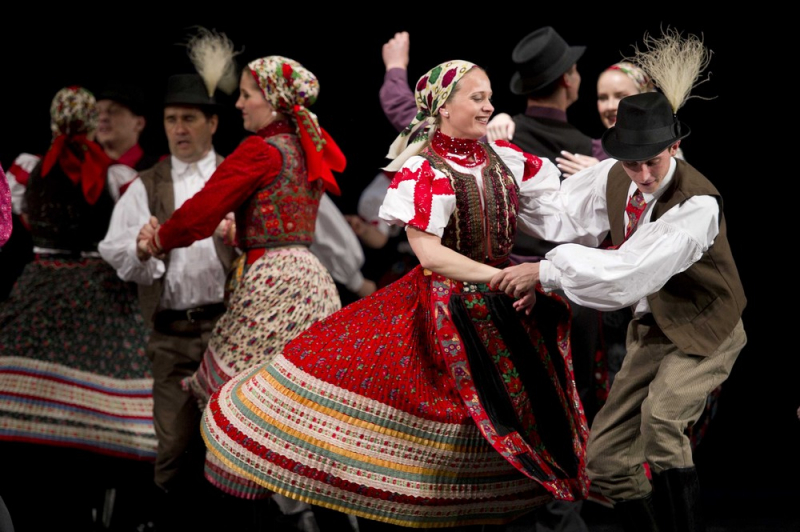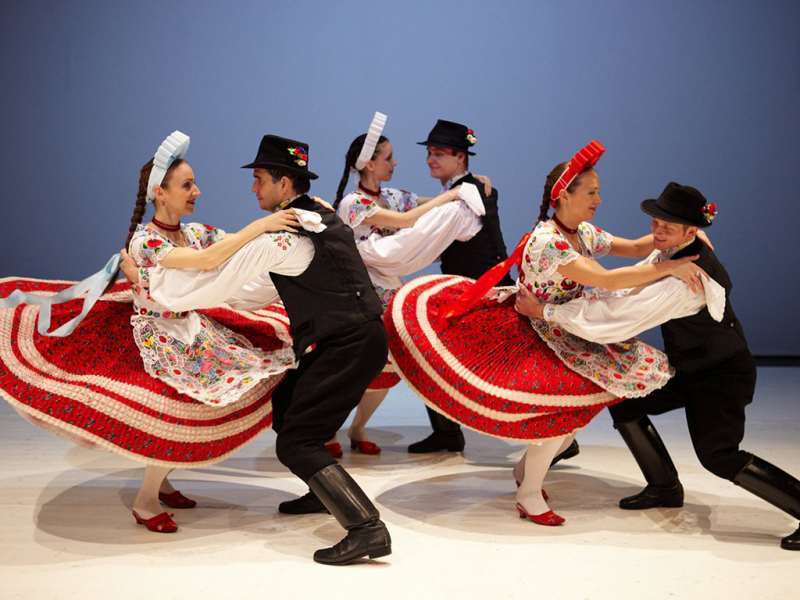Folk dance
Round dances (karikázó); jumping dances (ugrós); men's dances (legényes); slow and quick couples dances (csárdás); and stick dances (botoló), which are remains of weapon dances, are the five basic styles of traditional dance found across the Carpathian Basin. Each of these five main dance forms is unique to its geographical region. The dances of the Danube and Tisza rivers, for example, are simpler and more cheerful than the more intricate dances of Transylvania (Romania).
Because solo and pair dances are often freeform, there are several opportunities for individual improvisation. This distinguishes Hungarian dance culture from that of Western Europe and the Balkans, and it is responsible for its enormous richness. Dancers in couples dances may use a number of components, sometimes in an arbitrary sequence, such as dancing in separate formations, the man's virtuosic solo, the romantic chase game, closed couple spins, slow stroll followed by complicated foot patterns, and the woman's whirling under the man's arm. Solo men's dances are distinguished by technical skill and a diverse repertoire of motifs that show the dancer's uniqueness.












